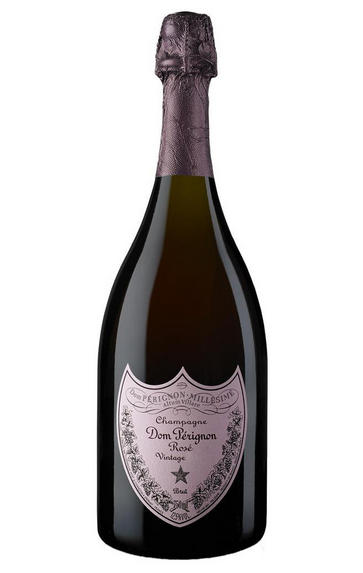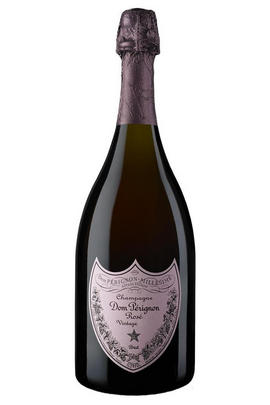
Critics reviews
Four new releases of the flagship Dom Perignon are the highlights among these Champagnes from Moet & Chandon. There is a timeless elegance about Dom Perignon that I find comforting and reassuring, like a favorite restaurant or food. For that reason, nothing could have prepared me for the Champagnes I tasted recently with Chef de Caves Richard Geoffroy.
(Antonio Galloni - Wine Advocate #192 - Dec 2010)
About this WINE

Dom Perignon
Dom Pérignon was the 17th century Benedictine monk who has gone down in history as the person who "invented" Champagne. His name was originally registered by Eugène Mercier. He sold the brand name to Moët & Chandon, which used it as the name for its prestige cuvée, which was first released in 1937.
A rigorous selection process in both the vineyard and winery ensures that only the best grapes go into Dom Pérignon champagne. Chardonnay and Pinot Noir are used in roughly equal proportions without one variety dominating the other.
In its youth, Dom Pérignon shows incredibly smooth, creamy fruit with perfect balance and weight. As it ages, it takes on wonderfully toasty aromas and a finesse equalled by very few of the other Grandes Marques.
Since 2014 Dom Pérignon has no longer been using the term oenothèque for its late-release Champagnes, but the word Plenitude. This style represents Dom Pérignon champagne that is left in contact with its lees and does not evolve in a linear fashion, but ages in a series of stages, producing “windows of opportunity, or plenitudes” when the Champagne can be disgorged and released to bring consumers a different expression of the same vintage.
There are three plenitudes in the life of a given vintage: the first plenitude spans between seven to eight years after the vintage, which is when Dom Pérignon Vintage is released, while the second one arrives between 12 and 15 years – which was previously the first oenothèque release, but from now will be branded as P2. The third window comes after around 30 years, when the Champagne has spent more than 20 years on its lees, which will now be termed as P3.

Rosé Champagne
Rosé wines are produced by leaving the juice of red grapes to macerate on their skins for a brief time to extract pigments (natural colourings). However, Rosé Champagne is notable in that it is produced by the addition of a small percentage of red wine – usually Pinot Noir from the village of Bouzy – during blending.
Recommended Producers : Billecart Salmon (Elizabeth Salmon Rose), Ruinart

Champagne blend
Which grapes are included in the blend, and their proportion, is one of the key factors determining the style of most Champagnes. Three grapes are used - Pinot Noir, Chardonnay and Pinot Meunier.
26% of vineyards in Champagne are planted with Chardonnay and it performs best on the Côtes des Blancs and on the chalk slopes south of Epernay. It is relatively simple to grow, although it buds early and thus is susceptible to spring frosts. It produces lighter, fresher wines than those from Burgundy and gives finesse, fruit and elegance to the final blend. It is the sole grape in Blancs de Blancs, which are some of the richest long-lived Champagnes produced.
Pinot Noir accounts for nearly 40% of the plantings in Champagne and lies at the heart of most blends - it gives Champagne its body, structure, strength and grip. It is planted across Champagne and particularly so in the southern Aube district.
The final component is Pinot Meunier and this constitutes nearly 35% of the plantings. Its durability and resistance to spring frosts make the Marne Valley, a notorious frost pocket, its natural home. It ripens well in poor years and produces a soft, fruity style of wine that is ideal for blending with the more assertive flavours of Pinot Noir. Producers allege that Pinot Meunier lacks ageing potential, but this does not deter Krug from including around 15% of it in their final blends.



Buying options
Add to wishlist
Description
The 2000 Dom Perignon Rose is a flashy, ripe Champagne that screams Pinot to a degree I have never encountered in another vintage of this wine. A dark, intense color leads to a Chambolle-like nose followed by endless red berries, flowers and spices, all backed up with plenty of muscle, richness and density. The wine continues to blossom on the palate, with utterly beguiling detail, clarity and polish, all qualities that resonate on the rich, expansive finish. The 2000 Dom Perignon Rose is 45% Chardonnay and 55% Pinot Noir, of which 25% is still Pinot. Geoffroy says his goal was to make a statement with the 2000 Dom Perignon Rose; he has done that?and so much more. In fact, the 2000 seems to signal a stylistic shift towards a more important, serious style of rose. This superb wine is not to be missed, but readers should note this is no easygoing rose, rather it is a Champagne that demands serious attention. The 2000 will test the limits of what readers expect from a Dom Perignon Rose, but the wine is simply marvelous. I loved it. This bottle was disgorged in 2008. Anticipated maturity: 2010-2025.
Four new releases of the flagship Dom Perignon are the highlights among these Champagnes from Moet & Chandon. There is a timeless elegance about Dom Perignon that I find comforting and reassuring, like a favorite restaurant or food. For that reason, nothing could have prepared me for the Champagnes I tasted recently with Chef de Caves Richard Geoffroy.
(Antonio Galloni - Wine Advocate #192 - Dec 2010)
wine at a glance
Delivery and quality guarantee